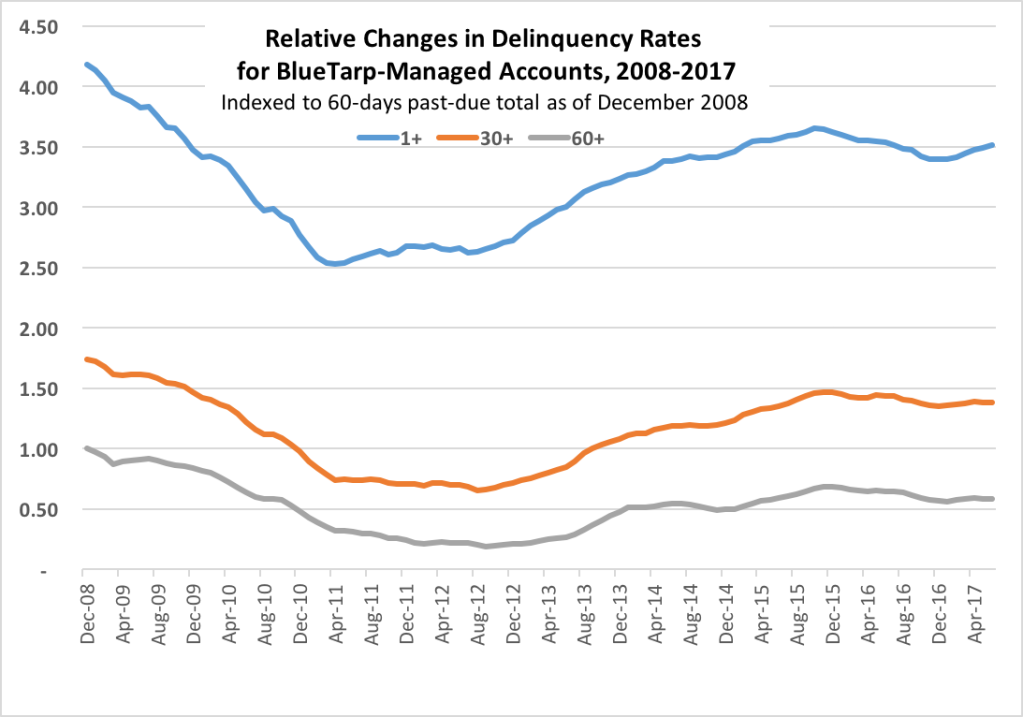Fresh data from one of LBMs’ principal credit management firms suggest that contractors’ bill-paying habits are about back to what they were during the go-go years a decade ago.
To illustrate its point, BlueTarp created this chart in which it tracked since 2008 the proportional rises and falls of accounts it manages that were at least one, 30, or 60 days past due. Each data point is indexed to the dollar total of 60-day overdue accounts as of spring 2008. Thus, for instance, in June of this year there were 59% as many dollars 60+ days overdue as there were nine years earlier.
BlueTarp, which manages roughly 120,000 accounts on behalf of 2,000 building material suppliers nationwide, suggests you focus on how delinquencies started off relatively high, shrank during the Great Recession and then began rising again around 2013, reaching a plateau in 2015. The Portland, Maine-based firm credits the 2011-2012 lows to the “survival effect,” in which financially weak contractors got out of business at the same time as dealers tightened their lending standards.
As for the current delinquency rates, “Our interaction with dealers suggests they are interpreting very low unemployment, record stock market, and high consumer confidence as suggestive that risk levels must be low too,” BlueTarp CEO Scott Simpson said. “This is an example of good news contagion–since these things are good, risk must be good too.” After all, numerous signs point to these being some of the best times ever for remodelers, and new-home construction keeps rising modeslty, so one would assume contractors would have better cash flow and thus find it easier to pay their bills on time.
But, as BlueTarp’s experiences show, that’s not exactly the case.

